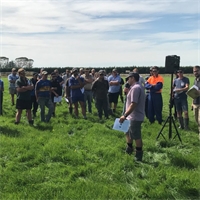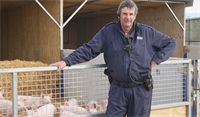10Oct
Strategies to prevent costly irrigator damage
WORDS AND IMAGERY PROVIDED BY FMG INSURANCE
How planning and practice can save you time and money
The last five years have seen $28 million in settled irrigator claims and weeks of valuable production time lost, much of which could have been prevented with a good plan.
FMG’s Advice Product Manager, Abby France, says “winter is the time to be making that plan to minimise the disruption and avoid those expensive repairs. Also, with strains on global supply chains we have experienced in recent years, parts could be hard to source and potentially mean months of disruption.”
There are four main areas of consideration when putting together your plan:
1. Prediction
New Zealand weather patterns are known for being variable and unpredictable. Farmers and Growers are increasingly turning to online tools and mobile apps to help them get ahead of bad weather and put their plans into action.
Some of our clients have had great success using platforms such as Metservice and Canterbury Weather Updates as well as apps such as PredictWind and Windy which allow you to set parameters for wind speed alerts.
For example, if the wind speed parameter was set to 90km/hr an alert would be received if the winds were to exceed that speed, allowing you time to plan accordingly. This lead-in time for high winds helps you make better planning decisions from the time the wind is predicted to when the event is over.
2. Authority
There needs to be a clear understanding of who is responsible for monitoring the winds and making the final decision on whether to proceed with the action plan. Lines of authority should include more than one person as the person who normally makes the decision may not be on-farm at the time.
As well as understanding who will carry out the plan on-farm, include the person who is responsible for:
• Monitoring the weather
• Making the decision to take action
• Getting the irrigators back in action
3. Action
It’s important that everyone who works on your farm understands what the agreed plan is if strong winds are on the way. This could include the method of ‘Plan, Point, Park and Anchor’. Everyone should understand their responsibilities and the process. This should also include what happens after the winds have passed and getting back to irrigating.
4. Practice
It is good to practice your plan, especially if you have new team members who are not familiar with it. These events may be spasmodic, so ‘on the job’ practice is limited. Therefore, time needs to be put aside to practice the plan. This is also a good time to adjust the plan to make sure it runs smoothly when it’s needed for real. Make sure you include health and safety risks in this process so that when the pressure of a real situation presents itself, everyone is safe as they implement your plan.
“Wind damage to irrigators remains the top cause in our claims, accounting for 34% of claims.” says Abby.
“Over half of all wind damage claims occur in spring and there’s real benefit from following the ‘Plan, Point, Park and Anchor’ advice we have developed in conjunction with Irrigation New Zealand.”
Head to fmg.co.nz/advice/irrigators for more information, including access to the free Irrigation Guide to help protect your irrigators this season.
Back to Real Farmer
Related

At DairyNZ, the 2020 year is off to a busy start, as we continue to work on a range of activities an...
Read More

Otago high country farmer jack cocks has spent the past eleven years recovering from a life-threaten...
Read More

There are number of diseases carried by livestock that can affect humans. These include leptospirosi...
Read More

Christchurch Men’s Prison Piggery is not just a producer of premium free-farmed New Zealand pork, i...
Read More

This year the winter period has been a lot colder, and we have seen a lot more frosts this year comp...
Read More

As the vibrant hues of summer fade into the cozy warmth of autumn, it's time to embrace the magi...
Read More